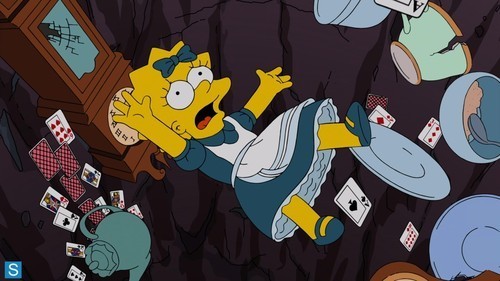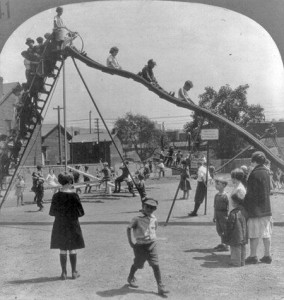It started with a tweet (mine)…
I swear it was only minutes before Simon Ensor @sensor36 published a post with enough substance for a PhD – or at least a 3-part TV series. A cartoon program.
Simon says:
Then there was Tania suggesting in a tweet that tweeps such as @Bali_Maha, @dogtrax, @sensor63 et al in her PLN were ‘cartoon characters’ – if she had not met them F2F or should I say 3D?
So is that my friends what we are to one another – Cartoons – (on)line drawings?
Now Simon thinks in colour:
Like a canary to a black and white cat that was a red rag to a bull.
He also believes in getting straight down to (serious) business:
Existential questions
1) Are our online ‘friends’, ‘follows’ ‘followers’, akin to Loony Tunes?
2) Are our offline ‘friends’, ‘follows’, ‘followers’ not akin to Loony Tunes?
I will pause here before the ‘cartoon preamble’. Simon has muddied the waters (in my head) with his cartoon world/real world questions. I’m propelled back into my early childhood when I wished that my world was the cartoon world. We all knew it was much more fun. Cartoon worlds were more colourful, more exciting, funnier – and risk taking was never a problem because even if you ended up falling off a cliff and being squashed into a flat pancake upon landing, you would always, always be able to stretch yourself out and back into your normal body shape. And with a cool sound effect.
Simon is playing with my head. He should not tempt me into going down the rabbit hole into fantasy land. Mixing realities. Switching worlds.

So now, we’re up to Simon’s
Cartoon preamble.
I can quite accept that @dogtrax or should I say Mr Hodgson K. qualifies as an honorary cartoon character.
His lifetime achievement to cartooning in itself would merit such an accolade.
I am not sure that I am quite yet ready to take on the caricature mantle without a fight.
Simon, how can you resist the lure of the cartoon reality? You, whose prose is poetry, references labyrinthine, whose playfulness is akin to the Dadaists.
But, yes, I will play your game. I see it’s four rounds and then you’re out. Or so you think you are. You concede defeat and accept the cartoon character identity. You have chosen wisely. You have chosen the cartoon reality. No more ‘He he he’ as part of the Queen’s court which was as taken with Boy George’s superficial mask as the people who insisted they saw the king’s finery in ‘The Emperor’s New Clothes‘.
Round one.
The strange case of Culture Club.
I can boast quite openly that I once met Boy George F2F (3D) outside the Mud Club in central London, while driving a London cab.
Boy George was undoubtedly a larger than life character, dressed to the nines, painted in broad strokes, armed with an infectious laugh.
He was surrounded by acolytes, disciples, hangers-on, groupies, and various fawning clubbers, similarly attired.
They appeared to be infected with George’s laugh.
“Ho ho ho ho.” (George)
Micro-second later
“He he he he.” (Queen’s court)
I am quite sure the boy George had more depth than this vignette. There was no apparent desire among the performers to go beyond the make-up.
Well done. You have not been fooled into thinking the pantomime of school is real – surely you must choose the cartoon world again. You will never again be able to be that teacher operating the Cambridge textbook franchise. You will never again be the teacher conducting the masked chorus who played out the lesson scenario to the last letter. Surely your cartoon avatar had already escaped down the rabbit hole or up the Magic Faraway Tree into magical lands.
Many of the my 3D colleagues are unknown to me, they remain line-drawings.
Yes, you are losing control here; worlds are colliding and changing places. Can you feel it? You admit to have a more lifelike exchange with unseen friends online than in your 3D pantomime life. You/we all speak the same Cartoon language.
And in Round Four you have a strong inkling that brings you closer to your unreality. Your blog is the Tardis, and you are all the Doctors.
You have one voice, you have another voice. (Some voices have trouble throwing off the old voices to take their place). Time and place matter not. Your voice, your identity do not reside in one body, are not located in the 3D world.
I sometimes feel that a distinct voice, that is evidenced in this Touches of Sense blog, has become a distinct character.
There are times when I feel distanced from it’s mannerisms, its annoying ways with words.
You are ready for the new Doctor.
There are times when I feel that I shall introduce a new character to stem its irritating flow.
CARTOON character.
Do not despair of your identity breakdown. In your last hours as a 3D entity of the pantomime world, you are having brief flashes of revelation.
I am reminded of Maha’s reflections on how she feels at times as catalogued as an ‘exotic’.
I am reminded of Susan’s reflections on her various incarnations.
I wonder if despite ourselves we become characters in others’ performances.
And there it is:
CARTOON character.
You are reborn. You throw off the skin and step out of the world you’ve been taught to accept as the real one.
OK Tania, I accept defeat. I am a caricature.
Do not think for a second that you are accepting defeat. On the contrary, you have returned home. You are where you belong, in the Cartoon World, the colourful world, the exciting and funny world.
This comic metaphor has become too complex for the cartoon @sensor63.
He accepts the mask.
He is one of the Connected Comic Characters.
He must live with it.
Oh the tragedy!
And it’s a genuine tragedy you now inhabit. Your comic tragedy has a speaker and a chorus and everyone is in costume. Everything is brightly coloured. You have many lives and you live your fantasy life. We are all there too – Maha, Kevin, Susan and the others. Me. In our cartoon world.
But who is watching us play out our online lives?




